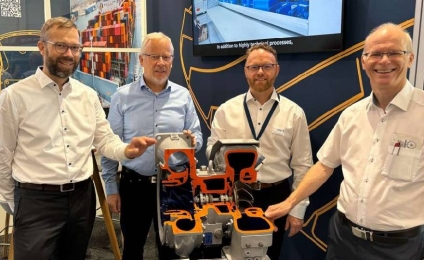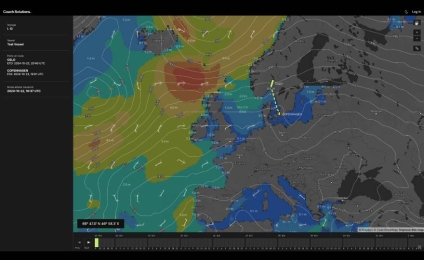Filtersafe, a world leader in automatic seawater filtration, has announced its new ‘MANTA’ filter series, with the first of the portfolio set to be on display at Posidonia in June.
The company’s latest high-performance filter is able to maintain impressive removal rates – 99.6% of organisms over 50 μm – all in a cost-effective package with a small footprint, specifically engineered for UV based ballast water management systems (BWMS). These organism removal rates ensure that ship owners and operators will be compliant with the International Maritime Organization’s D-2 standard for the implementation of the ballast water management convention, which must be adhered to by 08 September 2024, as well as the U.S. Coast Guard’s (USCG) existing ‘Final Rule for Ballast Water Treatment’. Filtersafe has received an equivalent series type approval from Det Norske Veritas (DNV) and the USCG. As one of the first complete filter redesigns to be approved under the USCG’s Policy Letter (CG-OES 03-20) Guidance on Testing Alternate Components for a Type Approved BWMS, the MANTA reflects one of the first true evolutions in ballast water filtration since the complex and costly testing regimes were mandated. Gaining approval under this policy ensures that customers of the performance-leading BallastSafe filter now have a new, more compact option to add to their BWMS portfolio. The MANTA features Filtersafe’s new one-motion scanner. This new design removes lateral motion of the scanner, reducing cost and eliminating parts. It features a larger proximity nozzle which is able to clean the filter screen in one continuous motion. When combined with the filter’s unpleated screen, the MANTA has improved cleaning coverage that reaches 100% of the screen. A high-performing filter with scalable automatic self-cleaning technology is particularly important for BWMS operations in challenging water conditions, which is a priority for regulators and ship operators alike. Automatic filter cleaning can be increased when ballasting in sediment-rich waters, including those found in the port of Shanghai, to ensure a consistent flow rate and to avoid costly operational issues such as clogging. Despite being tested with a finer mesh filter, the MANTA outperformed the original BallastSafe design in independent testing of the cleaning, removal rate, and throughput efficiency of the filters. Corrosion prevention remains another key industry pain point. Filtersafe introduced 904L stainless steel across its filter screen supply chain last year and this superior steel is also used in the MANTA series’ sintered screens. In addition, and in order to combat the steady-rising cost of alloy material, Filtersafe, together with its partners, has adopted a new SuperQuenching procedure, borrowed from the space industry, to overcome the material degradation of 316L due to the weaving, sintering, and fabrication process. This allows it to also offer a viable 316L screen option at a lower cost. Improved longevity and superior cleaning reduces maintenance costs and, even when maintenance is required, MANTA is thoughtfully designed to ensure it can safely and efficiently be maintained by one person. Mark Riggio, Head of Marine at Filtersafe, commented: “As requested by leading BWMS manufacturers, we’re pleased to offer Filtersafe performance in a smaller package, designed specifically for UV systems. Having equivalent series type approval already completed makes adopting a MANTA filter a no brainer for our current customers. The rising challenges posed by sediment-rich water conditions are not going away – and now we have the filter that anyone can use to meet them.” “From a shipowner and operators’ perspective, MANTA is a win in both the CAPEX and OPEX categories. You expect CAPEX costs may be a little more for a high-quality filter, MANTA disrupts that. And our OPEX costs have always been Filtersafe’s strong point. If you have any questions about this or just want to see a MANTA filter, I encourage you to swing by the Filtersafe booth at Posidonia.” Ballast water management is one of the toughest water treatment challenges in the world and demands the best technical solutions. There is sufficient technology and innovative equipment available on the market today to overcome operational challenges and ensure seamless, cost-effective regulatory compliance.










